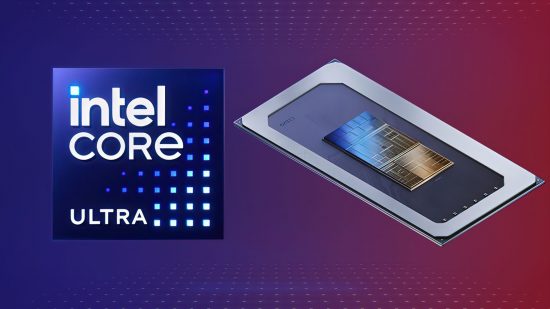The long-rumored switch by Intel from its Intel Core ix naming scheme to a new Intel Core Ultra naming scheme is finally set to happen soon, with the arrival next month of Intel Meteor Lake. The new mobile chip will be announced at the Intel AI Everywhere event happening that month.
We first heard about the Intel Core Ultra name six months ago when the an initial Intel Core Ulktra leak came via the Ashes of the Singularity benchmark. Since then Intel has confirmed the Intel Core Ultra change, suggesting it will be coming in the second half of 2023. Well, suffice to say, when we read that date range we weren’t quite expecting Intel to wait until a December event just to announce the first Intel Core Ultra product.

The first intel Core Ultra chip, then, will be the debut of the long-awaited Intel Meteor Lake architecture. Initially proposed as a mobile and desktop CPU architecture, Intel’s plans have shifted such that Meteor Lake will now be a mobile-only design, with Intel seemingly struggling to reach the clock speeds and power demands of desktop users with Meteor Lake, which uses a new 4nm manufacturing process.
Instead, we’re expecting to have to wait until the arrival of the next generation Arrow Lake architecture, which will use a new LGA 1851 socket and be built on an even newer Intel 20A (2nm) process.
Back to Intel Meteor Lake/Intel Core Ultra (gen one?) and it is the first CPU architecture from Intel to use a similar chiplet design to AMD’s recent CPUs. However, the two approaches are quite different.
AMD Zen 4 uses a simple split of ‘core’ dies with the CPU cores and caches on them and an IO die that houses the GPU, PCIe interface, memory controller and basically everything else, and they’re linked via the PCB they sit on. However, Intel has split things up further. There’s a core die, a GPU die – or ’tile’ as intel calls them, an SoC tile with the media engine, memory controller, and AI cores, an IO tile, and a base tile underneath that joins them all together. It’s no wonder Intel was having trouble getting them all working together at high enough clock speeds!
Notably, several of the dies are manufactured not by Intel but by TSMC, in a first for Intel CPUs, though it’s a tactic the company has used for producing its Intel Arc graphics cards. Speaking of graphics cards, Intel is bullish about the new integrated graphics on these chips too, claiming they’re competitive with Nvidia RTX 3050, which would also make them close to the performance of the AMD Phoenix chip of the Asus ROG Ally and Lenovo Legion Go.
Ultimately, the proof of the pudding will be in the launch of laptops and other mobile devices that use the new chips. It’s possible we’ll see a flood of such new devices immediately following Intel’s event but we suspect the bulk of Intel Meteor Lake laptops will make their entrance at the CES 2024 trade show in January.
